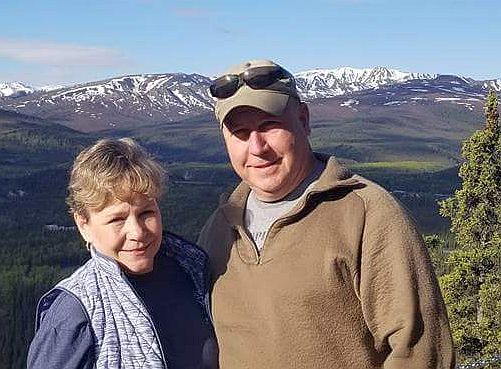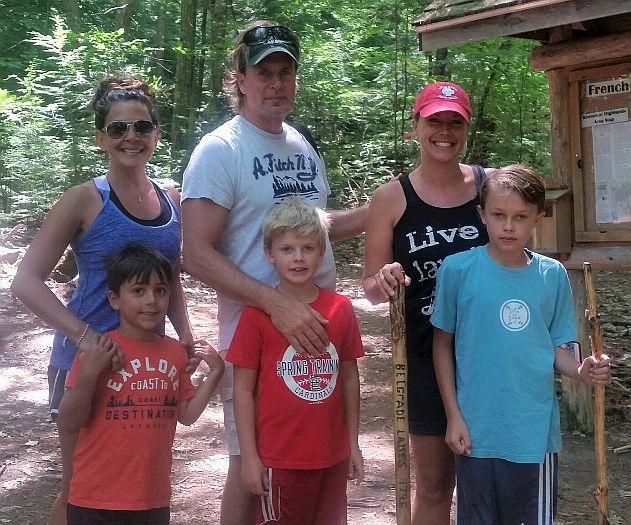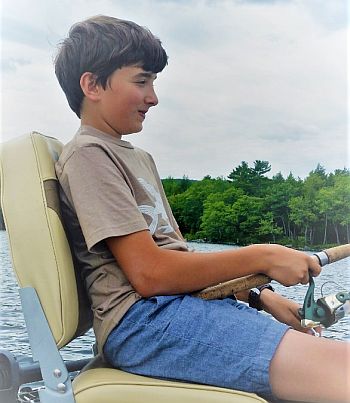
July 20 – 26, 2018Vol. 20, No. 7

Modified, an anti-GMO documentary is one of the Maine feature films at this year's Maine International Film Festival. More…
Highlights from this issue…
Download Full Print Edition [PDF] • Links to Other Pages on This Site
These archival articles are presented “as is.” Except for minor corrections or clarifications, most have not been updated since they appeared in print. Thus, some details may be out of date, and some hyperlinks may no longer work.
Reprogramming Jeremy: Film by Maine Playwright Has its World Premiere
by Gregor Smith

Sean Wagner as Jeremy in The Reprogramming of Jeremy.
What if the people around you, the people who love you and are supposed to act in your best interests, wanted you to change something about yourself that was fundamental to who you are? Would you? Should you even try?
These are the questions confronting the title character in The Reprogramming of Jeremy, a new film based on a play by Maine actor and director Bobby Keniston, who also adapted it for the screen. The film had its world premiere last Saturday, July 14, at Railroad Square Cinema as part of the Maine International Film Festival. The film will have a repeat screening this Saturday at 12:30.
Jeremy is a sweet, shy, sensitive teen, with a secret: he's gay. When this secret is revealed, it causes turmoil within his small, rural, close-minded town, and his parents, on the advice of their pastor, send Jeremy to a religious camp for conversion therapy, i.e. to "pray the gay away."
Conversion therapy is any type of therapy intended to change one's sexual orientation. It has been condemned as ineffective and potential harmful by the American Psychological Association and by many other organizations of mental health professionals both in the United States and abroad. Thirteen states and two Canadian provinces have outlawed conversion therapy, and during its recently concluded session, the Maine legislature passed a bill banning state-licensed practitioners from using conversion therapy on minors. Gov. Paul LePage vetoed the bill, and the legislature failed to override the veto.
The playwright and screenwriter currently lives in Dover-Foxcroft, after many years in the Skowhegan area. In an email, he writes, "I am very active at my hometown theater, Center Theatre, and Lakewood Theater in Madison. I am a playwright for the youth and high school markets with over 30 plays published. I previously worked as the theater teacher at Foxcroft Academy, but now write, direct and act full time,…" He also worked at Railroad Square Cinema for a few years in the early 2000s, making that theater an especially fitting venue for the first public showings of his first film.
He wrote the play in 2010, in response to news reports about bullied gay teens killing themselves. Describing his motivation, he states, "I wanted to write a play from a human perspective and not make it seem political or preachy that dealt with this issue. I staunchly stand for gay rights and against conversion therapy of any kind, but wanted to show the humanity in all of the people in Jeremy's life, even those who thought he needed to be reprogrammed."
He produced the play in the fall of 2011, both at Lakewood Theater and at Center Theatre. He noted, sadly, that a week before the play's premiere, "there was another high profile instance of a gay teen in Buffalo, NY, committing suicide after being bullied. His name was Jamey Rodemeyer. He died September 18, 2011 after having made videos on YouTube to help other victims of homophobic bullying."

Bobby Keniston
Although the characters in his play are not based on specific people he has known, the lead character is named after a girl on whom he had a crush in college and whom "I still think of as a dear friend. Her name is Jeremy, but she is always called Mimi. There is a line in the play [and in the movie] that Jeremy's mother says, how even if she'd had a girl, she would name her Jeremy, but 'probably call her Mimi or somethin'.' This was a tribute to my friend."
So how did the play become a movie? The film's director, Gail Wagner, who lives in Delaware, picks up the story: " I have always loved acting and wanted to pursue it as a career but life happens," she writes. She started acting again in community theater around fifteen years ago and has been doing films for ten, although The Reprogramming of Jeremy is the first feature film that she has directed. By days, she is a paralegal.
She continues, "I started directing stage plays a few years after returning to stage acting. To me its like painting a picture — you have this canvas (the stage), the paint (the script), and the brushes (the actors), you help guide it to this picture for people to appreciate at the end. I love seeing actors improve and grow, especially kids.
"I reached out to Bobby after one of his plays in which I was cast, A Forgetful Remembrance, won our theater competition. I believe writers should know how much a play was appreciated and the audience feedback. When I was staging his End of the Movie, we also communicated as did members of the cast. After End of the Movie performed in the Delaware Theatre Association One Act festival, Bobby shared The Reprogramming of Jeremy with us." In a separate email, she writes, "I was totally blown away by the emotions the play evoked and thought the story would make a great film. I chased Bobby for about 2 years to let me make the film and he [finally] agreed."
The film is shot in the style of documentary, in which interviews with the important people in Jeremy's life are interspersed with flashbacks. Except in the flashbacks, the characters do not interact with each other and only one character appears on screen at any given time. This gives the film more of a theatrical feel and helps keep it true to play from which it was derived.

Gail Wagner and her husband Tom Wagner on vacation. She is the director and both are producers of The Reprogramming of Jeremy.
"Today's film shots, both TV and film, generally cut to a different camera angle every 10-20 seconds," Wagner writes. "Older films held the shot for as long as 15 minutes similar to a stage play where the audience watches the actor speaking the entire time. This can be thought of as more theatrical vs. cinematic. I believed since the bulk were interviews, it was important not to cut away often, breaking the viewer's attention. It was critical to hold the viewer so that they experienced the interview like they were sitting with the interviewer."
She adds, "I also felt each location needed to speak as to the character or the action happening. The interviewed characters do not move from their seats as if stuck in their environment. Only Jeremy moves from one place to the next. Linda, Jeremy's mother, is interviewed at a dining table, while Hank, the father, is drinking beer outside of a trailer. Kenny, the jock best friend, is interviewed after a football practice at the school on stone bleachers, while Abby, the female best friend, is interviewed inside her house on a plush neutral colored couch. Rev. Becky and the Vice Principal [of Jeremy's high school] interviews take place in their very officious looking offices while Pastor Tom is inside his very open and welcoming church." (Rev. Becky Martin is the bible-thumping director of the conversion camp to which Jeremy is sent, while Pastor Tom is more compassionate leader of the church that Jeremy and his parents attend.)
Although the film was shot in Delaware, the location of Jeremy's town is never specified. It could be any small, rural town, anywhere in the U.S. The actors themselves, many of them in their first film roles, come from mainly from Delaware, but also from Pennsylvania, New Jersey, and Maryland. Wagner recruited each one to play a specific role. As the actor that she had originally wanted to play Jeremy aged out of the part, she asked her youngest son, Sean Wagner, to take on the role instead.
She writes, "I wanted actors whom I had worked with previously and knew would be prepared and could be relied upon to deliver; especially since most of the filming locations were only procured for a single day. I was thrilled with the performances all of them gave."
The film was shot on an ultra-low budget. It cost about $10,000 to make, all of which was fronted by the director and her husband. They subsequently raised around $3500 through an online Kickstarter campaign to pay film festival entry fees and to treat the cast and crew a private screening of a rough cut of the film in a nice leased space. She notes, "I was fortunate to obtain almost all of the filming locations free of charge. Our largest costs were feeding the cast and crew on location, insurance for the project, software, and one rented venue."
Although the film has been screened privately by panels of judges at other film festivals — and has won several awards as a result — it did not have any public showings before MIFF. Thus the MIFF screenings constitute the film's world premiere, and Wagner is "thrilled that it is occurring in Bobby's home state!" After MIFF, the film will have be shown publicly in Delaware, so that its cast, crew, and supporters can see the finished product.
Wagner still waiting to hear from eleven film festivals to which she has also submitted the film. "Because this film is a feature film, it is very hard to get it into an annual film festival without a big budget or actor of some recognition," she writes. "I am so grateful to MIFF for selecting The Reprogramming of Jeremy as part of their festival. After the festival circuit is complete, we will look for possible distribution. My major goal was to get the film made to tell this very moving story by Bobby and to highlight these incredible talented actors."
Wagner, the actors who portrayed Jeremy's mom and his "jock best friend" Kenny, and two of the crew will coming to Maine for the repeat screening on Saturday, July 21, at Railroad Square Cinema. Despite their collaboration on the film, this will be the first time that she and Bobby Keniston have never met in person. And what a meeting it will be!
Print Article • Go to Top of Page
MIFF Makes it in Maine
by Gregor Smith

Vanessa Opitz as Soleil in "Empath," one of the Maine Shorts.
As is MIFF's tradition, the second Saturday at this year's Maine International Film Festival is Making It In Maine Day. The day gives film goers a first (or second) chance to see all the features and shorts that are either set in Maine, shot in Maine, or made by Maine filmmakers.
The first public event of the day is the Maine Student Film & Video Festival at 12:30. For 41 years, the Maine Student Film & Video Festival has allowed Maine's budding filmmakers, aged 19 and younger, to submit short films, 10 minutes or less, to a juried, statewide competition, with the winning films to be shown and prizes to be awarded during a public ceremony, which is now held at the Waterville Opera House. MIFF has hosted the student festival since MIFF began in 1998.
The shorts are grouped according to the age of their makers (Grades K-6, Grades 7-8, and Grades 9-12), and within each age division are judged in three categories: Narrative, Documentary, and Creative. (This last category is for animated and experimental films.) Prizes vary from one year to the next, but typically include free admission to summer filmmaking workshops, cash awards, and subscriptions to online film-editing software.
Those who would like to see short films by older Mainers may stroll back to the Opera House for a program on Maine Shorts at 3:30. This year, Maine Shorts comprises nine short films ranging from 5 to 24 minutes long and totaling nearly two hours. The selection is a mixture of dramas, fantasies, and documentaries, but including three documentaries with a Central Maine connection, dealing with the art of handling delicate works of art at the Colby College Museum of Art, what it means to be an Asian student at Colby, and the infamous "ten-mile yard sale" held each summer on lawns along the road from Skowhegan to Cornville.
For those who prefer longer films, this year's festival has three Maine-connected feature films as well. The first, The Reprogramming of Jeremy, will have its world premiere at the festival. (See related article.) The film is based on a play by Dover-Foxcroft resident Bobby Keniston, who later wrote the screenplay and will introduce the screening. The title character is a sweet, shy, sensitive teen with a secret — he's gay. The film deals with the consequences of the revelation of that secret through documentary-style interviews and flashbacks with Jeremy and his friends, relatives, and acquaintances in his small, close-minded town. The screening is at 12:30 in Railroad Square's Cinema 1. (Yes, unfortunately it conflicts with the Maine Student Film & Video Festival.)
That evening, the Opera House will screen two Maine-related documentaries: Modified at 6:30 and Picture of Light at 9:30. Shot in Maine and Eastern Canada, Modified asks why the U.S. and Canada to not require foods containing genetically modified organisms (GMO) to be labeled as such, even though 64 other countries do. Blending advocacy and memory, Modified centers on the director's relationship to her mother, a gardener and anti-GMO activist who was fighting cancer as the film was being made.
The second film, Picture of Light is a meditation on the aurora borealis, the Northern Lights, which occasionally grace Maine skies, but can be seen more reliably in the Canadian arctic, where the film was shot. According to the MIFF website, "While combining glimpses of the characters who live in this remote environment with the film crew's comic and absurd attempts to deal with the extreme cold, the film reveals the paradoxes involved in trying to capture the spectacular light show of the Northern Lights on celluloid. But, non-spoiler alert: they do!" Originally released in 1994, the film has been digitally restored.
Admission to the Maine Shorts program or to any of three feature films costs $10 per person. To buy tickets or get more information, visit www.miff.org or call 866-811-4111.
Print Article • Go to Top of Page
The Washburn Family in Livermore, Maine
by Martha F. Barkley
Hoping some of you attended the special weekend at the Norlands Museum in Livermore, Maine recently. I understand many Belgrade elementary students have had field trips to the Washburn Family farmstead, community church, gothic library and one room schoolhouse. It is a standing testament to The Remarkable Americans as told by historian Kerck Kelsey.
He has written other better histories since, in my opinion. Each biography about a different Washburn brother improves: Israel Washburn, Jr.: Maine's Little-Known Giant of the Civil War and Prairie Lightning: The Rise and Fall of Drew Washburn. David McCullough's The Greater Journey riveted my attention on Elihu Washburne and his ambassadorship to Paris during the Franco-Prussian War of 1870-1871.
Actually, there were seven remarkable brothers and three remarkable sisters raised on that Livermore farm with plenty of hard work, defeat and surmounting of great difficulties. As Billie Gammon summarizes in her fine 23-page booklet: "Two Governors of two different states, Four Congressmen from four different states, One General in the Army, One Captain in the Navy, One Secretary of State, One United States Senator, and Two Foreign Ministers." Wow, definitely remarkable Americans.
The three sisters married well. Caroline married a doctor, Mary waited for her future husband to return from the Goldrush of 1849 and married in 1858 (long wait), and the third sister Martha studied at Waterville Liberal Institute and taught school before marriage.
On one of our extended visits in Paris, France, I dialed the American Embassy daily from our Left Bank hotel to try to make an appointment. Since 9/11 security at American Embassies has been stepped up. Finally on the fifth day I received a return call: "How far away are you?" said the American on the line. I answered we could hop a taxi and be there in minutes. The previous day I had walked by the embassy as I explored the Place de la Concorde and museums nearby. Security guards were all over!
Frank and I arrived quickly to more security guards and much fuss (removing camera and passports) before being greeted. Our guide took us into the beautiful hall of portraits where every ambassador had his distinguished spot. "Where is Elihu Washburne?" was all I could ask. Oh, his portrait is in the Ambassador's office, a place of honor! The pamphlet she gave me had a most extensive biography of Washburne's unusual accomplishments while serving in Paris. He was the only ambassador to remain in the war-torn city to help, while all other nations pulled out.
Elihu's family had to flee to Brussels because conditions were so very risky in Paris. An appointment of privilege turned into one of great challenges for this Washburne, who added the final "e" to his name because history told him his ancestors had spelled it that way. Everyday his diary reveals the plight of individuals helped by our American ambassador who stayed to make a difference when he could have fled like all the other ambassadors.
At this point, you may be wondering about the parents. How could so many accomplished brothers and sisters come from one family in a small, rural town in Maine? It is really quite the story and it is told in all of these books. Each accomplished brother and sister had such hardworking parents.
Read all of these books, but I must admit my favorite is the chapter in David McCullough's The Greater Journey. Michael Hill discovered the many letters and daily diary of Elihu when he visited the very stunning gothic library at Livermore, part of The Norlands Museum. [See his Elihu Washburne: The Diary and Letters of America's Minister to France During the Siege and Commune of Paris.] David McCullough accompanied his fine researcher and they sat on a hot hot summer day in the shade of a tree and discovered these marvelous, detailed accounts of a very dangerous Paris. Elihu repeatedly reached out to help victims of war.
Just as Elihu reached out as a young man and helped his very hardworking father on the Livermore farm. His dad was so very kind and ethical, that many neighbors were given needed goods without payment at the Washburn General Store, run by Israel, Sr. (1784-1876). Elihu and his brothers and sisters had learned from their parents that there are worse things than going out of business.
"The bankrupt storekeeper turned to farming and there followed a period of extreme poverty. It was necessary for the older boys to earn their own living, and this they did working as farm hands, store clerks, and teachers. It fell to the lot of thirteen year old Elihu to work out a debt of $25.00 which his father owed to Isaac Lovewell, a neighboring farmer…"
Trying times brought a family together. The mother Patty (given name Martha) Benjamin Washburn influenced her children likewise: "She is the only mother in the U.S. to have four sons elected to Congress. Among her brood were also a banker, an inventor and three daughters." All three daughters grew to be fine women who married well and became devoted mothers with accomplished children. They met their mother's high expectations.
The political affiliations and friendships with Lincoln, Grant (Washburn neighbor when elected president) and others must be mentioned. Also the very well known Gold Medal Flour developed by brother Caldwallader in Wisconsin and Minnesota "was the largest single owner of mill property in the world. His estate was valued at nearly three million dollars, much of which he left to charity." Israel, his dad, would have been very proud of his son Caldwallader.
Who has heard of these fine women and men from one family in our state? There must be something in the water and soil here that nurtures such character with strong, loving parents who worked and sacrificed for the betterment of others. The extraordinary family support and unity brought about great things for our country.
Read at least one of these mentioned books or a chapter from David McCullough's masterpiece or Billie Gammon's very complete pamphlet entitled "The Washburn Family of Norlands," sold at the museum gift shop. Go visit!
I have enjoyed Livermore every single time, learning something new about the remarkable Washburn family. The great gothic library structure was copied by one brother who worked in Hallowell and loved the design of a church in that nearby town. Can you find it? I did.…
Print Article • Go to Top of Page
Kids Everywhere
by Pete Kallin

The Vink family on French Mountain.
It's hard to believe this is already the 7th column of the summer. I couldn't believe it when my morning paper had a "Back to School" flyer in it already! I don't think the kids are reading the paper, though. They are too busy having fun in and around the water and hiking the nearby trails.
As the water has warmed into the mid 70's, the trout fishing is slowing down but the bass and pike are continuing to feed on schools of alewives. The bass are also hitting big Hex mayflies that are hatching in the evening and early morning. I have had good luck with spotting feeding fish on the surface early in the morning and casting big flies or poppers to them. A three-pound smallie on a 6-wt. flyrod is a lot of fun. I also got to spend a few hours fishing with my grandson, Nathan, on Long Pond. We got several decent smallies and a very nice "Jumbo" yellow perch. Also got to see a couple of recently fledged eagles and some brand new loon chicks.

Nathan Kallin fishing in Long Pond.
I've been getting a few hikes in and doing some berry foraging in the Kennebec Highlands. I am also seeing a lot of kids out hiking with friends and family. This morning I met young Morgan McKay from New Sharon who was taking her parents hiking for the day. They had just finished French Mountain and were headed up the Sanders Hill Loop when I met them. Morgan's dad is a firefighter in New Sharon. I also met the Vink Family of Jupiter, FL, and Village Camps in Belgrade Lakes. They were getting ready to head up French's with some friends from NY City, who were visiting.
This area offers some great outdoor recreation, whether you like to hike, bike, birdwatch, fish, sail, or paddle a canoe or kayak. Pick up a map of the local trails at Day's Store or from the 7 Lakes Alliance at the Maine Lakes Resource Center. Also, please check the 7-LA Facebook page for details on some interesting events scheduled this summer. Also keep an eye on the sign out front. And make sure you take a kid along on your next outdoor adventure.
Print This Article • Print All Articles • Go Back to Top

The print edition includes all the above articles and much more. You can find a complete table of contents on p. 3. Adobe Reader is required.
◀— Previous •
All 2018 Issues • Archives •
Business Directory • About Us • Home • Next —▶
©2018 by Summertime in the Belgrades. All rights reserved.








